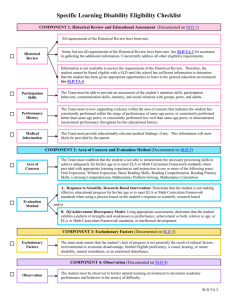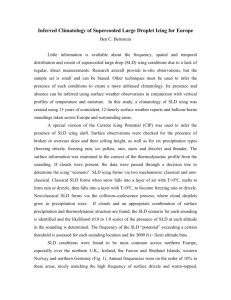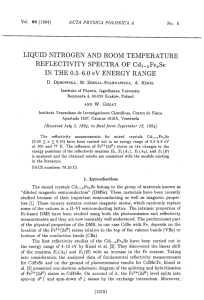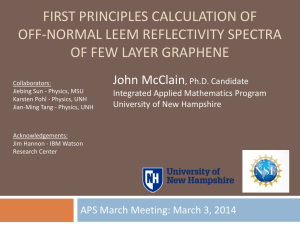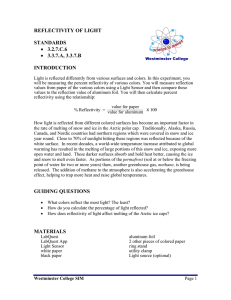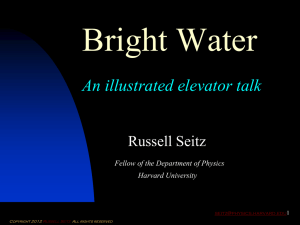Specular reflectivity
advertisement
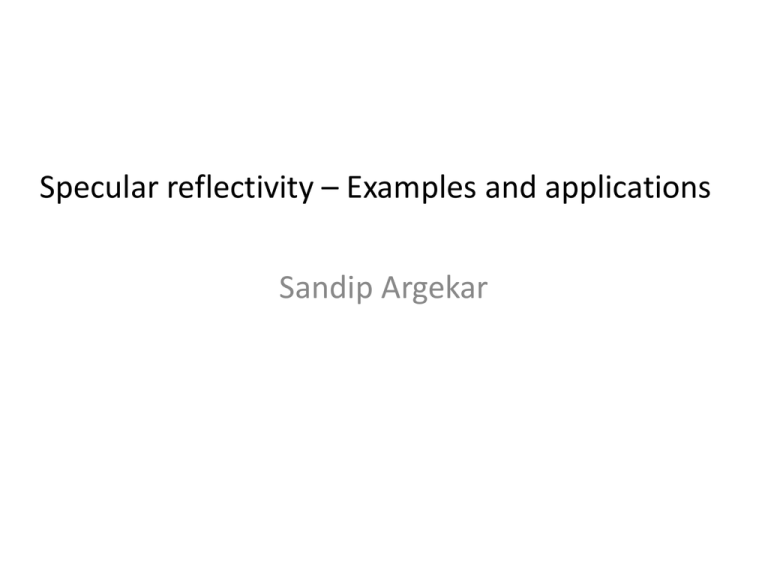
Specular reflectivity – Examples and applications Sandip Argekar Specular reflectivity qz Ѳrefl=Ѳincident Footprint, Critical angle q-4 decay, roughness Quantitative information of thickness and SLD in Z direction 7 to 8 orders of magnitude drop in intensity qz Background Features - Footprint effect In the regime of total external reflection, some intensity is lost as the footprint on the surface is too large Low q High q Foot print depends on beam width & sample geometry Critical edge The refractive index for x-rays and neutrons in materials is less than 1. n 1 i Si wafer experimental data Total external reflection occurs 1 9 1 n1 cos 1 n 2 Reflectivity 8 7 6 qc SLD 5 2 SLD substrate qc 4 25 30 35 -1 Q (Å ) 40x10 -3 Double critical edge – Better guestimation of layer SLD 2 critical edges observed q z q c1 qc 2 q c1 q z q c1 & q z q c 2 q z qc 2 Effect of roughness on the reflectivity profile Smooth surface Maximum specular reflection Rough surface Increased non-specular reflection Loss of intensity and sharpness Effect of roughness depends on coherence length lc lc 2 Only If roughness features < l c , reflectivity profile is affected ~ 5A X-ray reflectivity single layered system Fringes with uniform spacing Thickness of the layer : t 2 qz SLD of the layer pushes the curve up or down Kiessig fringes Multilayered systems – PS 19 1. Identify critical edge - Calculate substrate SLD qc SLD 2. Guess number of layers - Based on practical expt - Calculate approx SLD t layer 1 7 2 qz 3. Guess preliminary thickness t layer 2 7 crests 2 qz Neutron reflectivity Utilize contrast between H and D to understand polymeric and biological systems Swelling studies under dueterated solvents For Neutrons n 1 i 0 Neutrons penetrate through Si D2O becomes the new substrate Liquid cell configuration q c 4 ( D 2 O substrate ) Si D2O Courtesy - Peng Wang presentation Temperature dependent swelling of poly (N-isopropylacrylamide) • Swelling of a hydrogenated polymer with D2O • Water penetration shows a diffuse profile • Non-swollen polymer at the substrate interface Critical temperature Diffuse layer Panalytical XRD pro MD setup – X-ray reflectivity – Goniometer based LANSCE –SPEAR - Neutron reflectivity – Time of flight approach Handy tools – SLD calculator http://www.ncnr.nist.gov/resources/sldcalc.html Handy tools – Reflectivity data fitting Parratt 32
